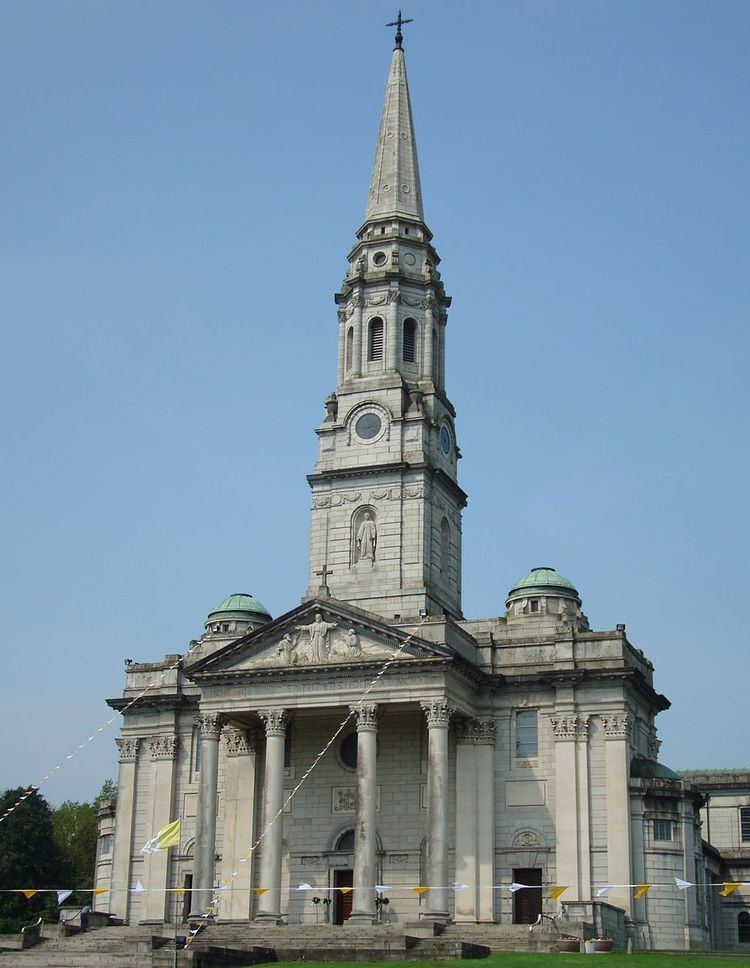Country Ireland Area 2,202 km² | Denomination Roman Catholic Established Synod of Kells | |
 | ||
Population- Total- Catholics (as of 2013)77,05269,460 (90.1%) Patron saints Saint Patrick, Saint Felim | ||
The Roman Catholic Diocese of Kilmore (Irish: Deoise na Cille Móire; Latin: Dioecesis Kilmorensis) is a Roman Catholic diocese which is mainly in the Republic of Ireland although a few parishes are in Northern Ireland. It is one of eight suffragan dioceses which are subject to the Metropolitan Archdiocese of Armagh. The present Bishop is the Most Reverend Philip Leo O'Reilly, Bishop of Kilmore, who was installed on 15 November 1998.
Contents
Geography
Kilmore diocese covers most of County Cavan and parts of counties Leitrim, Fermanagh, Meath and Sligo. The main towns are Bailieborough, Ballyjamesduff, Cavan, Manorhamilton and Virginia.
Ecclesiastical history
The diocese of Kilmore was originally called Breifne (Latin: Tirbrunensis, Tybruinensis or Triburnia; Irish: Tír mBriúin, meaning "the land of the descendants of Brian", one of the Uí Briúin kings of Connacht). It was formally established as one of the dioceses approved by Cardinal Giovanni Paparoni at the synod of Kells in 1152. The boundaries of the diocese are approximately the same as those of the ancient Kingdom of Breifne; which today consists of almost all of County Cavan, roughly the northern half of County Leitrim, and parts of County Fermanagh, County Meath and County Sligo.
In 1454, Bishop Aindrias Mac Brádaigh (Andrew McBrady) was given permission by Pope Nicholas V to have the ancient church at Kilmore, founded in the sixth century by Saint Felim, to be the cathedral church of the diocese. It was rebuilt and became to be known in Irish as An Chill Mhór (meaning Great Church) and anglicised as Kilmore, which gave its name to the diocese, a name which has remained ever since.
Tir Brun / Kilmore was a territorial diocese, based on the kingdom of Breifne. From the late twelfth century the chieftainship of Breifne was contested between the Ui Raghallaigh or O'Reilly sept in the east and the Ui Ruairc or O'Rourke sept in the west. The bishops of the diocese came predominantly from the eastern end of the diocese, right down until the reformation.
Kingdom of Ireland
During the Reformation in Ireland, the diocese lost the cathedral and all other temporalities. After a period of two hundred years of uncertainty, Bishop Denis Maguire (1770–98) gave new stability to the diocese and started the process of rebuilding both discipline and churches. Bishop James Browne (1827–65) continued with this work and founded the diocesan college in 1839. Bishop Patrick Lyons (1937–49) had the old Roman Catholic Cathedral in Cavan rebuilt between 1938 and 1942. The current cathedral is dedicated to Saints Patrick and Felim and is built in the neoclassical style with a spire of 230 ft (70.1 m).
Ordinaries
The following is a basic list of the bishops of Kilmore since 1728.
